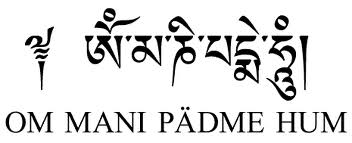When you fear something, you empower it to be frightening.
Disempower Illuminati by Dropping Fear
04 May 2012 Leave a comment
in Uncategorized Tags: bangalore, consciousness, frequency, india, life, love, peace, spiritual, sudevi
Have Experiential Understanding, Not Blind Faith!
19 Apr 2012 Leave a comment
in Uncategorized Tags: consciousness, faith, india, life, light, mystic spirituality, spiritual, spirituality, sudevi
A Q&A video about the value of personal experiences, mystic spirituality, the paradigm of Light versus Dark, and more.
The Hindu Concept of 4 Yugas
29 Dec 2011 2 Comments
in Uncategorized Tags: 2012, consciousness, hindu, hinduism, india, kali, satya, shiva, yugas
According to Hindu scriptures, all mortal beings are destined to pass through four great epochs in every cycle of creation and destruction. This divine cycle turns full-circle at the end of what is known as kalpa. A kalpa is a yuga cycle, which is a period of 10,000 divine years, and is divided into four ages or yugas (Sanskrit yuga = age/epoch). According to one calculation, one yuga cycle is estimated to be 4,320,000 years, and one kalpa 4,320,000,000 years.
About the 4 Yugas
The four great epochs in Hinduism are: Satya Yuga, Treta Yuga, Dwapar Yuga and Kali Yuga. Satya Yug or the Age of Truth is said to last for four thousand divine years, Treta Yuga for three thousand, Dwapara Yug for two thousand and Kali Yuga will last for one thousand divine Years that equals to 432,000 earthly years.
It is also believed that three of these great ages have already passed away, and we are now living in the fourth one. We live in the Kali Yuga — in a world infested with impurities and vices. People possessing genial virtues are diminishing day by day. Floods and famine, war and crime, deceit and duplicity characterize this age. But, say the scriptures, final emancipation is possible only in this age. Kali Yuga will end at 21 December 2012 and we will move to Satya Yuga, the Age of Truth.
The four ages symbolize the four phases of involution during which man gradually lost the awareness of his inner selves and subtle bodies. Hinduism believes that human beings have five kinds of bodies, called annamayakosa, pranamayakosa, manomayakosa vignanamayakosa and anandamayakosa, which represent the ‘gross body’, the ‘breath body’, the ‘psychic body’, the ‘intelligence body’ and the ‘bliss body’ respectively.
Another theory explains these epochs of time on the basis of the degree of loss of righteousness in the world. It says, during Satya Yuga only truth prevailed (Sanskrit Satya = truth), Treta lost ¼ truth, Dwapar lost ½ truth and Kali is left with only ¼ truth. Evil and dishonesty has replaced truth in the last three ages or yugas.
The Life Of The Buddha [Full BBC Documentary- HQ]
21 Nov 2011 Leave a comment
in Uncategorized Tags: buddha, buddhism, consciousness, dalailama, india, meditation, oneness, peace, spiritual
This documentary covers the life of Siddhartha Gautama, a young prince from India who went out to find the reason for “Dukkha” [problems] of human life. He later found the reason of Dukkha and teached a way to live life. He was later known as the Buddha, the founder of “Buddhism”.
The religion with no god.
“If there is any religion that would cope with modern scientific needs it would be Buddhism.” -Albert Einstein
Mantras and Chants
22 Sep 2011 Leave a comment
in Uncategorized Tags: aryans, buddha, buddhism, chants, india, japan, kabbalah, mantras, om, tibet
Mantras are sacred sounds that are believed to possess supernatural powers. The word “mantra” is a Sanskrit word, which probably means “that which protects (tra) the mind (man).”
Mantras are practiced especially in Tibetan Buddhism, where they are believed to embody the power and attributes of particular deities. The best known mantra is that of the beloved deity Avalokiteshvara: Om mani padme hum. Tibetan Buddhists chant mantras repeatedly as a part of meditation, often with the aid of mala beads for counting.
In addition to invoking deities and providing supernatural power, mantras are often used for protection from evil and misfortune. They are chanted during large public rituals to avert collective danger and in private rituals to protect individuals against illness or other misfortune. For example, every summer in Kyoto, Japan, children sit in a circle and pass around a large rosary to invoke the protection of the bodhisattva Kshitigarbha, guardian of children.
Protective rites play an even greater role in the Mahayana and esoteric Buddhist traditions, found primarily in East Asia and Tibet. In these regions, especially in Tibet, dharanis and mantras are widely used in exorcistic and protective rites. Dharanis are statements of doctrine or adoration believed to have spiritual power when chanted. Mantras are shorter statements, often just single words, that are believed to contain the same power. In both cases, their power derives not as much from their content as from their invocation of the gods and the frequent exclamations, which are believed to frighten away evil spirits.
For many cultures it is the written letters that have power — the Hebrew Kabbalah for instance, or the Anglo-Saxon Runes. Letters can have an oracular function even. But in India special conditions applied that meant that writing was very definitely inferior to the spoken word. The Brahmins were the priestly caste of the Aryan peoples. It was they that preserved the holy writings — initially the Vedas, but later also the Upanishads. For years, they were the only ones who knew the mantras or sacred formulas that had to be chanted at every important occasion. However, with the advent of egalitarian Hindu schools of Yoga, Vedanta, Tantra and Bhakti, it is now the case that intra-family and community mantras are passed on freely as part of generally practiced Hindu religion. Such was the influence of the more orthodox attitude of the elite nature of mantra knowledge that even the Buddhists, who repudiated the whole idea of caste, and of the efficacy of the old rituals, called themselves the shravakas, that is “the hearers”. A wise person in India was one who had “heard much”. Mantras then are sound symbols. What they symbolise, and how they function depends on the context, and the mind of the person repeating them. Studies in sound symbolism suggest that vocal sounds have meaning whether we are aware of it or not. And indeed that there can be multiple layers of symbolism associated with each sound. So even if we do not understand them, mantras are no simply meaningless mumbo jumbo — no vocal utterance is entirely without meaning. We can look at mantra is a range of different contexts to see what they can mean in those contexts: Om may mean something quite different to a Hindu and a Tibetan Buddhist.
The Oracle – A 400 Year Old Secret – HD
18 Sep 2011 Leave a comment
in Uncategorized Tags: buddhism, consciousness, dalailama, india, life, oracle, secret, spiritual, tibet, trance
Cloaked in secrecy for over 400 years, the State Oracle of Tibet has been a strange and mystical aspect of the Tibetan Buddhist tradition. This ancient spirit, which has inhabited a succession of thirteen human mediums, advises the Dalai Lama on matters of public and religious policy. To witness the eerie spectacle of a medium entering a trance state and being possessed by the Oracle is to confront profound questions about the very nature of human consciousness.
The Maharishi Effect
13 Sep 2011 Leave a comment
in Uncategorized Tags: consciousness, crime, global, india, life, maharishi, meditation, oneness, peace, spiritual
The Maharishi Effect is a phase transition to a more orderly and harmonious state of life in society as measured by decreased crime, violence, accidents, and illness, and improvements in economic conditions and other sociological indicators. The scientists who discovered this effect named it in honour of Maharishi Mahesh Yogi, who predicted it thirty years ago. Maharishi had predicted that when a critical sub-population of individuals – 1% – experienced and stimulated the field of pure consciousness through the Transcendental Meditation Programme, a type of macroscopic field effect of coherence would occur in the society and the quality of life would improve. This would manifest in more orderly and harmonious individual behaviour and a measurable improvement in the various social indices which characterise the quality of life in society.
The first experimental evidence for this phenomenon came in 1974 with the studies of Borland and Landrith (1976). They observed 11 cities in the United States in which 1% of the population was practising the TM-Technique in 1972. Then they looked at one major index of the quality of life in the cities – the crime rate – and compared it which the crime rate in 11 other cities matching for population and geographic location. They noted that when 1% of the town’s population practised Transcendental Meditation the trend of rising crime rate was reversed, indicating increasing order and harmony.
Since then extensive scientific research on the phenomenon of the Maharishi Effect has repeatedly verified that coherence, positivity and harmony in collective consciousness is produced by the group practice of the Transcendental Meditation Programme.
The extended Maharishi Effect
In 1976, with the introduction of the more advanced TM-Sidhi Programme, including Yogic Flying, a more powerful effect was expected. This prediction was first verified in 1978 during a global campaign in 108 countries: crime rate was reduced everywhere.
This global research demonstrated a new formula: the square root of one percent of a population practising Transcendental Meditation and the TM-Sidhi Programme, morning and evening together in one place, is sufficient to neutralise negative tendencies and promote positive trends throughout the whole population.
A global Maharishi Effect was created by the group practice of 7,000 Yogic Flyers – 7,000 being approximately the square root of one per cent of the world’s population.
Why Meditate?
20 Jul 2011 Leave a comment
in Uncategorized Tags: budd, buddha, consciousness, frequency, global, humanrights, india, life, love, meditate, meditation, nature, nibbana, oneness, peace, reincarnation, soul, spiritual
First we should ask ourselves, ‘Why did the Buddha teach meditation?’ or, ‘What is the purpose of meditation?’
The purpose of Buddhist Meditation is to attain Nibbana. Nibbana is the cessation of mentality (nama) and materiality (rupa). To reach Nibbana, therefore, we must completely destroy both wholesome mental states, rooted in non-greed, non-anger, and non-delusion, and unwholesome mental states, rooted in greed, anger, and delusion, and which produce new birth, aging, sickness and death. If we destroy them totally with the insight knowledge and path knowledge (ariyanagga), then we will reach Nibbana. In other words, Nibbana is release and freedom from the suffering of the round of rebirths (samsara), and the cessation of rebirth, ageing, sickness, and death, and so to free ourselves from the many forms of suffering we need to meditate. Since we wish to be free from all suffering, we must learn how to meditate in order to attain Nibbana.
Meditation consists of Samatha and Vipassana meditation, which must both be based upon virtuous conduct of body and speech. In other words, meditation is the development and perfection of the Noble Eightfold Path.
The story of Goa
16 Jul 2011 Leave a comment
in Uncategorized Tags: consciousness, dance, electronic, global, goa, goagil, hippies, humanrights, india, life, love, music, native, nature, oneness, peace, psy, psytrance, shaman, shamanism, shiva, soul, spiritual, substance, trance
Goa emerged on the world scene back in the 60’s with the ‘Hippie Movement’ which brought the western world to the beaches of Anjuna. Composed mostly of white teenagers and young adults between the ages of 15 and 25 years old, hippies inherited a tradition of cultural dissent from bohemians and beatniks of the Beat Generation in the late 1950s. Stories of Freaks in Goa and a slowly building counter culture made some enthusiasts hop onto an overland Bus leaving for Goa all the way from Europe (Greece). Disillusioned, disenchanted preferring an altered state of consciousness to the collective illusion the world embraces as ‘Reality’, they found home under the palm trees of Goa.
Staying in Goa was extremely affordable then and to the Hippies, money was always just a means to an end. They stayed and stayed and stayed even longer … the community doubled, tripled, increased exponentially in very little time. So began a long ongoing chapter in the history of the psychedelic culture spawning a whole new generation into an alternate reality, a different world where anything was possible and all boundaries dissolved.
This is just one of the many ways of telling the story of Goa, the Hippies, the Freaks and a generation of hipsters being exposed to a plethora of substances which dramatically alter ones perception of the world and the nature of reality.
Over the years, as capitalism and globalization began making in roads everywhere, the locals and the Goan Government started to become increasingly less tolerant toward the Hippie attitude as it conflicts with the ethics and lifestyles of modern day society. The authorities were now coming on strongly against Nudism, Drugs and Loud Music being played around residential areas late into the night. Some Hippies hence chose the path of reform and got back to the regular city lifestyle and a day job, some became Sadhus and Sanyasis and some stayed back and are still seen dancing around the shacks of South Anjuna, namely Curlies and Shiva Valley. If you ever get a chance to speak to some of these willing old timers, you would know they have a whole lot to talk about and for good reason. With the slow death of the “Hippie Era”, Goa’s reputation as the Freak Capital never diminished, but evolved into the Monsterattes we see on News Channels and read about in the newspapers. Irresponsible use of drugs and sexual predation are closely linked in the darkness of our present times and it’s only we who can change this and turn things around in a new direction we collectively envision.
Karma is Real !
10 Jul 2011 Leave a comment
in Uncategorized Tags: awakening, awareness, consciousness, dalailama, global, humanrights, india, karma, life, love, native, nature, oneness, pastlife, peace, reincarnation, spiritual
Karma (the act of getting back what you give) is real and the Dalai Lama knows it. Now scientists know it too. In the May 28th edition of the Vancouver Sun, Karen Gram describes his gift of a candy bar to a young street urchin and quotes spiritualist Victor Chan as saying, “This really made his day. That really simple act of giving had a profound effect on the Dalai Lama himself and this is his life’s work.”
Psychologist Miriam Mongrain recruited volunteers on Facebook and had them fill out scientifically valid questionnaires about their emotional state. She then randomly divided them into a compassion group and a control group, and asked the compassion group to engage in acts of kindness lasting five to 15 minutes every day for seven days and to answer questions online about it every day. Gram quotes Mongrain as saying, “The effects at one week were very significant.” The results were so significant that they could not have occurred by chance.
“I was pleasantly surprised to see that people really seem to feel significantly happier when they do these compassionate acts. That to me is not a small thing. The more they did it the better they felt.” Gram quotes Mongrain as saying, “We know for a fact that the increase is real. We are not asking people to become missionaries in Africa. This is (about) small things that don’t take long.”





